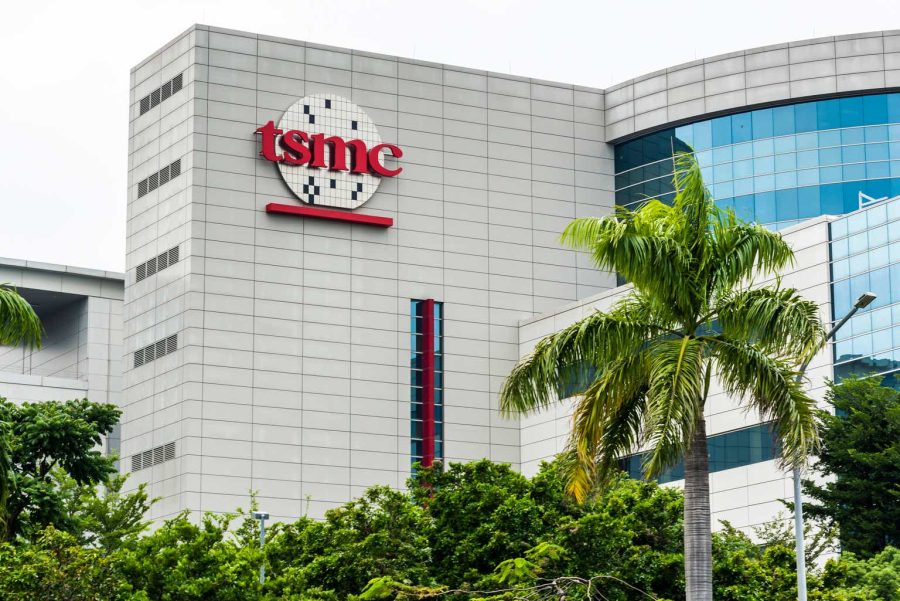July 14, 2024 This Week Top S&P 500 Gainers & Losers
Tesla: Time To Take Profits
Microsoft: The Q4 Results Should Surprise You
Tesla: Optimus And FSD Probably Won’t Save The Day
April 23, 2024 Maximizing Profits: When is the Right Time to Sell Your Business?
April 12, 2024 Improve Your Financial Status: A How-To Guide
April 12, 2024 How ZIM Integrated Container Tracking is Revolutionizing Global Trade
March 15, 2024 6 Best Growth Stocks To Buy Now According to Metatrader 5

Taiwan Semiconductor (TSM) Stock Forecast for 2024–2028. Sell or Buy?
Updated: July 26, 2024 (23:02)
Sector: TechnologyThe share price of Taiwan Semiconductor Manufacturing Company Lim. (TSM) now
50/200 Day Moving Average: $167.94 / $129.11
This figure corresponds to the Average Price over the previous 50/200 days. For Taiwan Semiconductor stocks, the 50-day moving average is the resistance level today.
For Taiwan Semiconductor stocks, the 200-day moving average is the support level today.
Are you interested in Taiwan Semiconductor Manufacturing Company Lim. stocks and want to buy them, or are they already in your portfolio? If yes, then on this page you will find useful information about the dynamics of the Taiwan Semiconductor stock price in 2024, 2025, 2026, 2027, 2028. How much will one Taiwan Semiconductor share be worth in 2024 - 2028?
When should I take profit in Taiwan Semiconductor stock? When should I record a loss on Taiwan Semiconductor stock? What are analysts' forecasts for Taiwan Semiconductor stock? What is the future of Taiwan Semiconductor stock? We forecast Taiwan Semiconductor stock performance using neural networks based on historical data on Taiwan Semiconductor stocks. Also, when forecasting, technical analysis tools are used, world geopolitical and news factors are taken into account.
Taiwan Semiconductor stock prediction results are shown below and presented in the form of graphs, tables and text information, divided into time intervals. (Next month, 2024, 2025, 2026, 2027 and 2028) The final quotes of the instrument at the close of the previous trading day are a signal to adjust the forecasts for Taiwan Semiconductor shares. This happens once a day.
Historical and forecast chart of Taiwan Semiconductor stock
The chart below shows the historical price of Taiwan Semiconductor stock and a prediction chart for the next month. For convenience, prices are divided by color. Forecast prices include: Optimistic Forecast, Pessimistic Forecast, and Weighted Average Best Forecast. Detailed values for the Taiwan Semiconductor stock price can be found in the table below.
Long-term forecasts by years.


Taiwan Semiconductor Manufacturing Company (TSMC) holds a crucial position in the global tech supply chain, making the analysis of its stock movements essential for investors. Several pivotal factors are poised to influence TSM stock rates in the near future.
Key Influencing Factors and Their Impact
Geopolitical Risks: The ongoing tensions between China and Taiwan stand out as the most significant factor affecting TSM. High-profile statements from figures like Donald Trump suggesting wavering U.S. support in case of Chinese aggression add to this uncertainty, putting pressure on TSM stocks as investors weigh potential operational disruptions.
Increasing Demand for Advanced Chips: TSMC is experiencing robust demand, especially from the High-Performance Computing (HPC) segment, with orders from industry giants like Apple and NVIDIA keeping its production capacity maxed out until at least 2025. This persistent high demand propels revenue growth, making TSM stock an attractive buy for many investors.
- Revenue Structure: While TSMC's smartphone segment shows some decline, the booming HPC sector, now comprising 52% of revenues, significantly boosts their financial health.
- Expansion Plans: TSMC's strategy to build new factories in the U.S., focusing on advanced technologies, is a proactive approach to ensure long-term growth and address geopolitical risks.
- Financial Performance: Recent upward revisions in revenue and EBITDA guidance highlight TSMC’s strong growth trajectory, enhancing investor confidence and positively affecting stock prices.
- Pricing Strategy: By leveraging its technological advancements to implement strategic price hikes for 3nm and advanced packaging technologies, TSMC can improve its gross margins, further bolstering stock performance.
For analysts, understanding these factors is critical for accurate TSM stock forecasts. Monitoring geopolitical developments, closely tracking demand trends in advanced chips, and analyzing financial performance and strategic pricing can help predict company stock movements effectively. Given the current landscape, TSM remains a viable stock, but potential investors must stay informed of evolving geopolitical dynamics to make well-timed decisions.
Overall, with the mixture of rising geopolitical risks and strong demand, TSM stock shows both considerable potential and significant uncertainty, making it imperative for analysts to consider these elements for accurate predictions.
Review the original Analysis


Taiwan Semiconductor Manufacturing Company (TSMC) remains at the forefront of the semiconductor industry, largely driven by its leadership in AI foundry services and advanced node development. Analysts keeping a close watch on TSM stock forecast need to consider several critical factors to make accurate predictions.
Crucial Elements Influencing TSM Stock Rates
Firstly, TSMC's dominance in the AI foundry market is a major driver of its stock prices. With over 90% market share in leading process nodes, the company serves key players like Nvidia and Broadcom, ensuring high capacity utilization and robust financial performance. This leadership solidifies investor confidence, ultimately boosting TSM stock prices.
Another pivotal aspect is TSMC's capacity utilization and advancement in node technology. The anticipated doubling of 3nm process capacity and the introduction of N2 volume production by 2025 point to solid growth and sustained technological leadership. These advancements signal improved yields and pricing power, which can positively affect TSM stock price prediction.
- Strategic CapEx adjustments also play a crucial role. The company's decision to allocate $30-32 billion, with a significant portion dedicated to advanced process nodes, highlights confidence in future demand. This forward-looking investment strategy is likely to result in long-term growth, impacting TSM stock prices favorably.
- Additionally, TSMC's expansion into advanced packaging broadens its market presence and enhances its leadership across the semiconductor value chain. Given the rising demand for AI chip packaging, this expansion is expected to contribute to TSM stock price appreciation.
However, geopolitical risks, particularly tensions between the U.S. and China, pose potential volatility. Any changes in U.S. administration policies could affect TSMC's supply chain and market access. While the immediate impact may be moderate, long-term geopolitical dynamics could strain investor confidence, affecting TSM stock performance.
In conclusion, by closely monitoring TSMC’s advancements in AI foundry, node technology, CapEx strategies, and geopolitical factors, analysts can make well-informed predictions about changes in TSM stock rates. Understanding these critical elements will enable better decision-making regarding whether to buy or sell Taiwan Semiconductor stock.
Review the original Analysis


The outlook for Taiwan Semiconductor (TSMC) stocks is promising yet complex, with several key factors poised to influence upcoming price changes. Analysts closely watch TSMC’s robust revenue and gross margin growth, AI-driven demand, valuation multiples, and geopolitical developments to predict TSM stock rates accurately.
TSMC's strong financial metrics, including a 32.8% year-over-year revenue increase and a gross margin of 53.2% for Q2'24, demonstrate excellent growth prospects. Additionally, the company expects Q3'24 revenues of up to $23.2 billion, reflecting continued momentum. These solid figures instill confidence in investors, making TSM stock an attractive option for those seeking stable growth.
Analyzing AI Demand and Geopolitical Sentiment
A crucial driver for TSMC’s stock is AI-driven demand, particularly in high-performance computing (HPC). The HPC segment now comprises 52% of TSMC's revenue, with a 28% year-over-year growth. As global investments in AI infrastructure and data centers surge, TSMC stands to gain significantly, ensuring sustained revenue growth. Thus, keeping a close eye on AI sector trends and spending patterns is vital for analysts.
Geopolitical risks also play a pivotal role in TSMC’s stock valuation. Recent political statements have caused sharp sell-offs, underscoring the stock's sensitivity to external factors. Analysts must factor in potential political developments, especially tensions between China and Taiwan, to gauge future stock performance accurately.
- Revenue and Gross Margin Growth: TSMC’s strong Q2 and forecasted Q3 figures.
- AI-Driven Demand: Continued expansion in the HPC segment.
- Market Sentiment and Political Developments: Sensitivity to geopolitical events.
Ultimately, TSMC's valuation multiples suggest that the stock may be undervalued compared to peers like Nvidia and AMD, offering a potential bargain for investors. By closely monitoring these factors, analysts can make well-informed predictions about TSM stocks' future performance.
### Keywords:TSM stock forecast, Taiwan Semiconductor name stock forecast, TSM stock buy or sell, is TSM a good stock to buy, why TSM stock down, TSM stock price prediction, TSM stock price target, TSM stock buy or sell, Taiwan Semiconductor stock forecast, TSM stock price prediction, buy or sell Taiwan Semiconductor stock.
Review the original Analysis
Taiwan Semiconductor Manufacturing Company, Ltd. manufactures and markets integrated circuits. The company’s services include: plate manufacturing, probing, assembly and testing, mask manufacturing and design services. TSMC circuits are used in computers, communications, consumer electronics, automotive and industrial equipment.
Taiwan Semiconductor daily forecast for a month
| Date | Target | Pes. | Opt. | Vol., % |
|---|---|---|---|---|
| Jul 28 | 161.05 | 159.92 | 162.40 | 1.55 |
| Jul 29 | 161.50 | 159.69 | 162.24 | 1.60 |
| Jul 30 | 160.63 | 158.51 | 162.85 | 2.74 |
| Jul 31 | 160.76 | 159.12 | 163.30 | 2.63 |
| Aug 01 | 159.18 | 157.14 | 160.42 | 2.09 |
| Aug 02 | 161.22 | 159.83 | 163.09 | 2.04 |
| Aug 03 | 160.19 | 157.72 | 162.17 | 2.82 |
| Aug 04 | 159.00 | 157.44 | 161.48 | 2.57 |
| Aug 05 | 159.64 | 157.44 | 161.01 | 2.27 |
| Aug 06 | 158.04 | 156.90 | 158.67 | 1.13 |
| Aug 07 | 157.73 | 156.21 | 159.40 | 2.04 |
| Aug 08 | 156.81 | 154.80 | 159.10 | 2.78 |
| Aug 09 | 158.16 | 155.98 | 159.43 | 2.21 |
| Aug 10 | 160.56 | 159.73 | 161.66 | 1.21 |
| Aug 11 | 163.36 | 161.89 | 165.51 | 2.24 |
| Aug 12 | 164.21 | 162.99 | 166.34 | 2.06 |
| Aug 13 | 163.06 | 161.36 | 164.30 | 1.82 |
| Aug 14 | 163.06 | 161.36 | 164.95 | 2.22 |
| Aug 15 | 159.93 | 158.74 | 162.36 | 2.28 |
| Aug 16 | 160.38 | 159.48 | 161.66 | 1.37 |
| Aug 17 | 159.93 | 158.49 | 162.26 | 2.38 |
| Aug 18 | 157.85 | 156.74 | 159.80 | 1.95 |
| Aug 19 | 158.19 | 156.30 | 160.69 | 2.81 |
| Aug 20 | 161.17 | 158.85 | 162.55 | 2.33 |
| Aug 21 | 159.65 | 158.92 | 161.47 | 1.61 |
| Aug 22 | 161.06 | 159.38 | 162.44 | 1.92 |
| Aug 23 | 160.06 | 157.50 | 161.21 | 2.36 |
| Aug 24 | 158.84 | 157.19 | 161.19 | 2.55 |
| Aug 25 | 157.03 | 155.59 | 157.91 | 1.49 |
| Aug 26 | 158.60 | 156.41 | 160.38 | 2.53 |
Taiwan Semiconductor Daily Price Targets
Taiwan Semiconductor Stock Forecast 07-28-2024.
Forecast target price for 07-28-2024: $161.05.
Positive dynamics for Taiwan Semiconductor shares will prevail with possible volatility of 1.527%.
Pessimistic target level: 159.92
Optimistic target level: 162.40
Taiwan Semiconductor Stock Forecast 07-29-2024.
Forecast target price for 07-29-2024: $161.50.
Positive dynamics for Taiwan Semiconductor shares will prevail with possible volatility of 1.573%.
Pessimistic target level: 159.69
Optimistic target level: 162.24
Taiwan Semiconductor Stock Forecast 07-30-2024.
Forecast target price for 07-30-2024: $160.63.
Negative dynamics for Taiwan Semiconductor shares will prevail with possible volatility of 2.663%.
Pessimistic target level: 158.51
Optimistic target level: 162.85
Taiwan Semiconductor Stock Forecast 07-31-2024.
Forecast target price for 07-31-2024: $160.76.
Positive dynamics for Taiwan Semiconductor shares will prevail with possible volatility of 2.559%.
Pessimistic target level: 159.12
Optimistic target level: 163.30
Taiwan Semiconductor Stock Forecast 08-01-2024.
Forecast target price for 08-01-2024: $159.18.
Negative dynamics for Taiwan Semiconductor shares will prevail with possible volatility of 2.045%.
Pessimistic target level: 157.14
Optimistic target level: 160.42
Taiwan Semiconductor Stock Forecast 08-02-2024.
Forecast target price for 08-02-2024: $161.22.
Positive dynamics for Taiwan Semiconductor shares will prevail with possible volatility of 1.997%.
Pessimistic target level: 159.83
Optimistic target level: 163.09
TSM (TSM) Monthly Stock Prediction for 2024
| Month | Target | Pes. | Opt. | Vol., % |
|---|---|---|---|---|
| Aug. | 163.43 | 155.70 | 175.83 | 11.45 |
| Sep. | 179.07 | 169.81 | 187.54 | 9.45 |
| Oct. | 175.53 | 170.70 | 182.67 | 6.55 |
| Nov. | 176.68 | 167.35 | 189.32 | 11.60 |
| Dec. | 182.90 | 171.84 | 187.53 | 8.37 |
Taiwan Semiconductor forecast for this year
Taiwan Semiconductor Stock Prediction for Aug 2024
An uptrend is forecast for this month with an optimal target price of $163.43. Pessimistic: $155.70. Optimistic: $175.83
Taiwan Semiconductor Stock Prediction for Sep 2024
An uptrend is forecast for this month with an optimal target price of $179.07. Pessimistic: $169.81. Optimistic: $187.54
Taiwan Semiconductor Stock Prediction for Oct 2024
An downtrend is forecast for this month with an optimal target price of $175.525. Pessimistic: $170.70. Optimistic: $182.67
Taiwan Semiconductor Stock Prediction for Nov 2024
An uptrend is forecast for this month with an optimal target price of $176.683. Pessimistic: $167.35. Optimistic: $189.32
Taiwan Semiconductor Stock Prediction for Dec 2024
An uptrend is forecast for this month with an optimal target price of $182.902. Pessimistic: $171.84. Optimistic: $187.53
Taiwan Semiconductor (TSM) Monthly Stock Prediction for 2025
| Month | Target | Pes. | Opt. | Vol., % |
|---|---|---|---|---|
| Jan | 179.68 | 174.94 | 186.60 | 6.25 |
| Feb | 175.93 | 170.12 | 185.22 | 8.15 |
| Mar | 177.28 | 167.73 | 187.23 | 10.42 |
| Apr | 178.84 | 169.99 | 186.71 | 8.96 |
| May | 175.70 | 171.64 | 189.42 | 9.39 |
| Jun | 182.27 | 176.25 | 186.28 | 5.38 |
| Jul | 169.43 | 156.76 | 173.91 | 9.86 |
| Aug | 162.17 | 149.14 | 168.41 | 11.44 |
| Sep | 157.35 | 149.56 | 164.10 | 8.86 |
| Oct | 154.06 | 144.57 | 159.82 | 9.54 |
| Nov | 163.21 | 153.88 | 175.96 | 12.55 |
| Dec | 160.70 | 152.92 | 173.43 | 11.82 |
Taiwan Semiconductor (TSM) Monthly Stock Prediction for 2026
| Month | Target | Pes. | Opt. | Vol., % |
|---|---|---|---|---|
| Jan | 159.46 | 152.62 | 171.39 | 10.95 |
| Feb | 170.86 | 160.71 | 184.96 | 13.11 |
| Mar | 166.73 | 155.72 | 180.12 | 13.54 |
| Apr | 155.72 | 146.13 | 160.18 | 8.77 |
| May | 150.07 | 144.13 | 156.51 | 7.91 |
| Jun | 156.67 | 142.89 | 170.12 | 16.01 |
| Jul | 164.95 | 153.33 | 179.28 | 14.47 |
| Aug | 168.39 | 156.35 | 181.36 | 13.79 |
| Sep | 173.03 | 161.61 | 183.30 | 11.84 |
| Oct | 168.46 | 154.93 | 177.54 | 12.73 |
| Nov | 150.67 | 146.36 | 156.97 | 6.76 |
| Dec | 145.36 | 134.81 | 151.28 | 10.89 |
Taiwan Semiconductor (TSM) Monthly Stock Prediction for 2027
| Month | Target | Pes. | Opt. | Vol., % |
|---|---|---|---|---|
| Jan | 138.49 | 131.94 | 144.73 | 8.84 |
| Feb | 128.89 | 121.52 | 137.68 | 11.74 |
| Mar | 135.41 | 129.16 | 143.76 | 10.15 |
| Apr | 130.35 | 120.17 | 138.24 | 13.07 |
| May | 133.22 | 128.82 | 138.20 | 6.79 |
| Jun | 146.55 | 135.59 | 155.90 | 13.03 |
| Jul | 146.55 | 142.04 | 155.42 | 8.61 |
| Aug | 160.25 | 156.20 | 174.18 | 10.32 |
| Sep | 170.13 | 157.96 | 180.42 | 12.45 |
| Oct | 186.41 | 175.33 | 202.61 | 13.46 |
| Nov | 170.82 | 162.74 | 185.67 | 12.35 |
| Dec | 179.09 | 168.65 | 191.70 | 12.02 |
Taiwan Semiconductor (TSM) Monthly Stock Prediction for 2028
| Month | Target | Pes. | Opt. | Vol., % |
|---|---|---|---|---|
| Jan | 184.21 | 176.72 | 194.95 | 9.35 |
| Feb | 174.69 | 166.43 | 182.38 | 8.75 |
| Mar | 166.43 | 154.71 | 171.19 | 9.62 |
| Apr | 168.99 | 156.72 | 178.28 | 12.09 |
| May | 173.82 | 168.09 | 181.85 | 7.57 |
| Jun | 171.72 | 157.74 | 181.92 | 13.29 |
| Jul | 186.26 | 175.61 | 192.41 | 8.73 |
| Aug | 186.88 | 175.57 | 193.87 | 9.44 |
| Sep | 200.24 | 191.43 | 207.29 | 7.65 |
| Oct | 213.68 | 205.92 | 226.37 | 9.03 |
| Nov | 211.80 | 202.24 | 219.02 | 7.66 |
| Dec | 201.55 | 189.80 | 208.42 | 8.94 |
Taiwan Semiconductor information and performance
NO. 8, LI-HSIN ROAD 6, SCIENCE-BASED INDUSTRIAL PARK, HSINCHU, TW
Market capitalization of the Taiwan Semiconductor Manufacturing Company Lim. is the total market value of all issued shares of a company. It is calculated by the formula multiplying the number of TSM shares in the company outstanding by the market price of one share.
EBITDA of Taiwan Semiconductor is earnings before interest, income tax and depreciation of assets.
P/E ratio (price to earnings) - shows the ratio between the price of a share and the company's profit
Price/earnings to growth
Dividend Per Share is a financial indicator equal to the ratio of the company's net profit available for distribution to the annual average of ordinary shares.
Dividend yield is a ratio that shows how much a company pays in dividends each year at the stock price.
EPS shows how much of the net profit is accounted for by the common share.
Trailing P/E depends on what has already been done. It uses the current share price and divides it by the total earnings per share for the last 12 months.
Forward P/E uses projections of future earnings instead of final numbers.
Enterprise Value (EV) /Revenue
The EV / EBITDA ratio shows the ratio of the cost (EV) to its profit before tax, interest and amortization (EBITDA).
Number of issued ordinary shares
Number of freely tradable shares
Shares Short Prior Month - the number of shares in short positions in the last month.
Taiwan Semiconductor (TSM) stock dividend
Taiwan Semiconductor last paid dividends on 09/12/2024. The next scheduled payment will be on 10/09/2024. The amount of dividends is $7 per share. If the date of the next dividend payment has not been updated, it means that the issuer has not yet announced the exact payment. As soon as information becomes available, we will immediately update the data. Bookmark our portal to stay updated.
Last Split Date: 01/01/1970
Splitting of shares is an increase in the number of securities of the issuing company circulating on the market due to a decrease in their value at constant capitalization.
For example, a 5: 1 ratio means that the value of one share will decrease 5 times, the total amount will increase 5 times. It is important to understand that this procedure does not change the capitalization of the company, as well as the total value of assets held in private hands.
















































